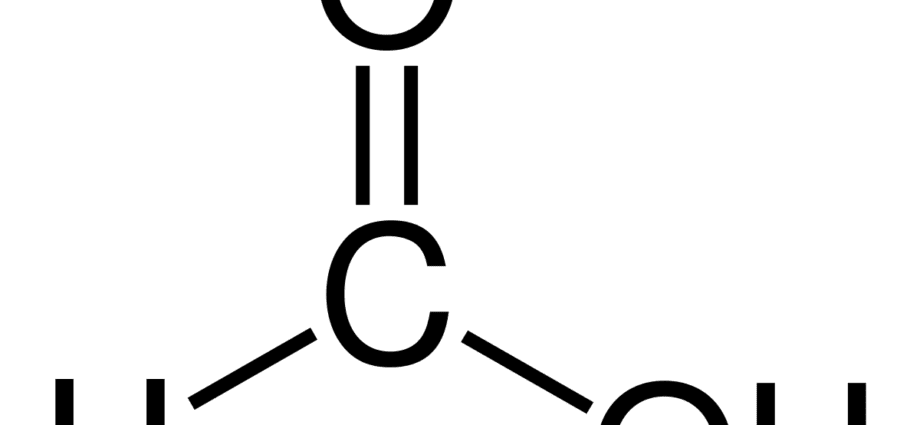Contents
Formic acid (Formic acid, methane acid, E236).
Formic acid is a monobasic carboxylic acid registered as a food additive with the international classification code E236, which is used as a preservative. It is considered the first representative in the series of saturated monobasic carboxylic acids.
The chemical formula is HCOOH.
General Characteristics of Formic Acid
Formic acid is a clear, colorless, odorless, and sour-tasting liquid. The substance has the property of dissolving in glycerin, benzene and acetone and mixing with water and ethanol. Formic acid was named after it was isolated by the Englishman John Ray from a huge number of red forest ants (calorizator). It is produced chemically as a by-product of the synthesis of acetic acid. The natural suppliers of formic acid are nettle, pine needles, fruit, and the secretions of bees and ants.
Useful Properties of Formic Acid
The main useful property of formic acid is slowing down the processes of decay and rotting, respectively, increasing the shelf life and use of products. It is noted that formic acid stimulates the metabolism of cells, is an irritant for nerve endings.
Harm E236
The food additive E236 Formic acid can provoke the occurrence of allergic reactions and serious disorders of the gastrointestinal tract in case of overdose. If formic acid in its pure form gets on the skin or mucous membranes, as a rule, a burn occurs, which should be treated as quickly as possible with a solution of soda and immediately contact a medical institution for qualified help.
Contact with concentrated formic acid vapors can cause damage to the eyes and respiratory tract. Accidental ingestion of even dilute solutions causes the phenomena of severe necrotic gastroenteritis.
The danger of formic acid depends on the concentration. According to the classification of the European Union, a concentration of up to 10% has an irritating effect, more than 10% – corrosive.
Application of E236
Food additive E236 is most often used as an antibacterial and preservative agent in the production of livestock feed. In the food industry, the properties of E236 are used in confectionery, non-alcoholic and alcoholic beverages, canned fish and meat. Formic acid is also used in the chemical industry, medicine and pharmaceuticals, in the production of woolen fabrics and leather tanning.
Use of E236
On the territory of our country, it is allowed to use the food additive E236 as a neutral preservative, subject to compliance with the standards established by the Sanitary Rules of our country.










